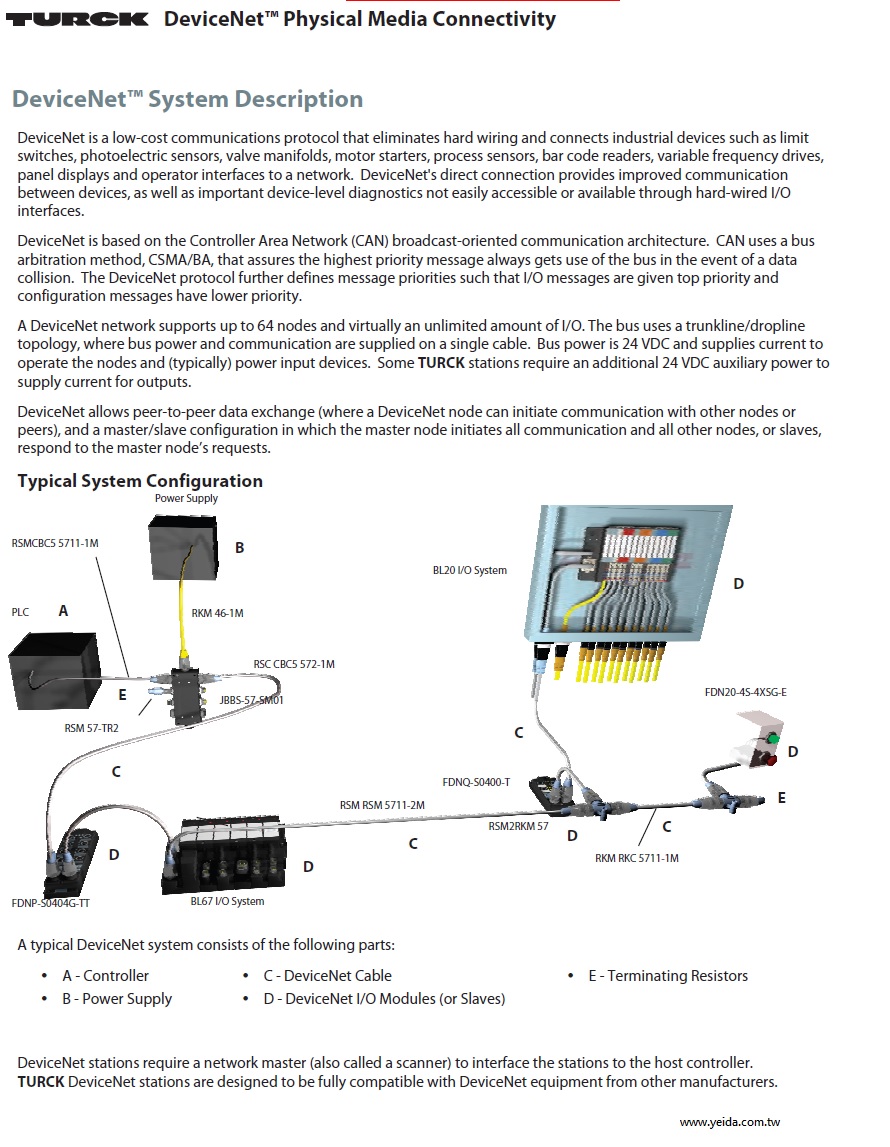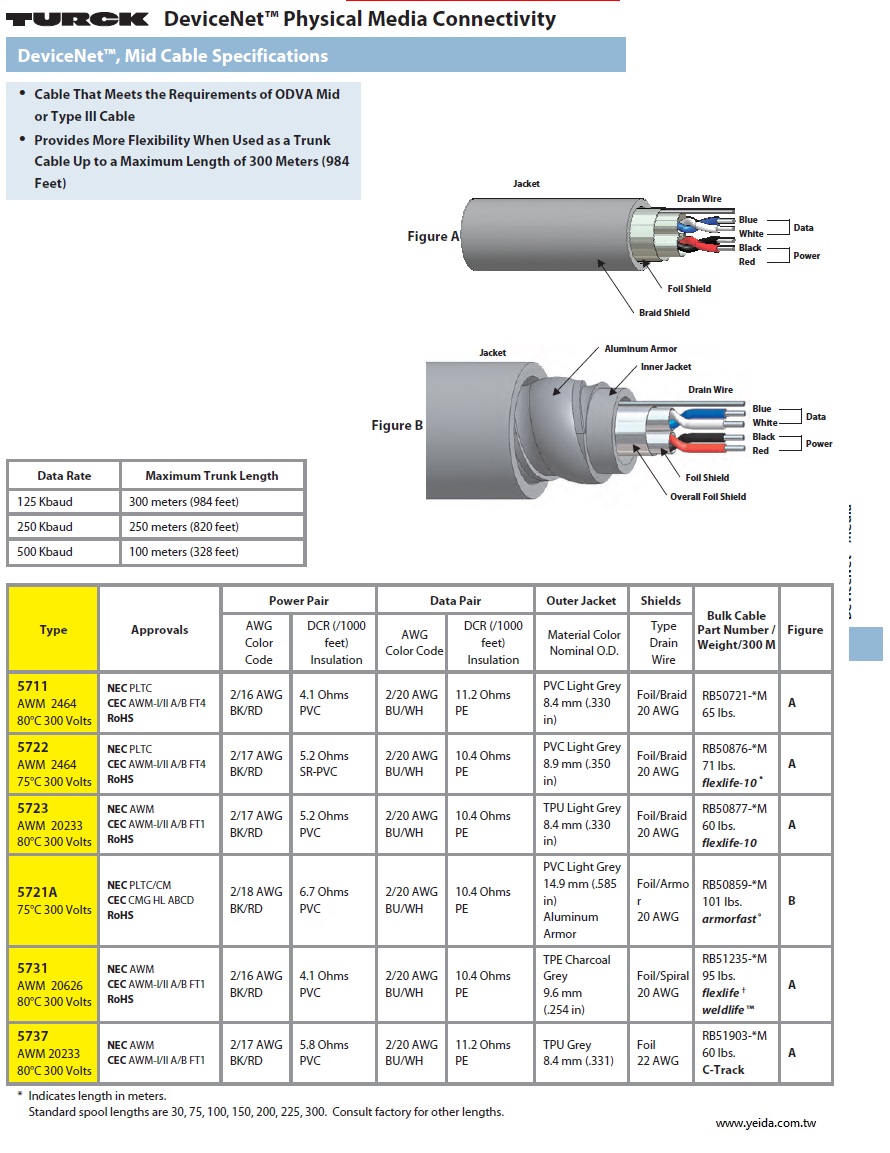
TURCK-DEVICENET-MID, google, belden, alpha, lapp
DeviceNet™ Physical Media Connectivity MID or Type III Cable
工業自動化DeviceNet™現場總線連接電腦用MID or Type III 電纜
• Cable That Meets the Requirements of ODVA Mid
or Type III Cable
• Provides More Flexibility When Used as a Trunk
Cable Up to a Maximum Length of 300 Meters (984
Feet)
Features
• Cables that meet the requirements of the ODVA
• PLTC rated cable
• Available in thin, mid, and thick styles
• 7/8 and M12 connectors
• Rated up to 9 Amps and 600 Volts
• IP67/IP69K rated
DeviceNet™ System Description
DeviceNet is a low-cost communications protocol that eliminates hard wiring and connects industrial devices such as limit
switches, photoelectric sensors, valve manifolds, motor starters, process sensors, bar code readers, variable frequency drives,
panel displays and operator interfaces to a network. DeviceNet's direct connection provides improved communication
between devices, as well as important device-level diagnostics not easily accessible or available through hard-wired I/O
interfaces.
DeviceNet is based on the Controller Area Network (CAN) broadcast-oriented communication architecture. CAN uses a bus
arbitration method, CSMA/BA, that assures the highest priority message always gets use of the bus in the event of a data
collision. The DeviceNet protocol further defines message priorities such that I/O messages are given top priority and
configuration messages have lower priority.
A DeviceNet network supports up to 64 nodes and virtually an unlimited amount of I/O. The bus uses a trunkline/dropline
topology, where bus power and communication are supplied on a single cable. Bus power is 24 VDC and supplies current to
operate the nodes and (typically) power input devices. Some TURCK stations require an additional 24 VDC auxiliary power to
supply current for outputs.
DeviceNet allows peer-to-peer data exchange (where a DeviceNet node can initiate communication with other nodes or
peers), and a master/slave configuration in which the master node initiates all communication and all other nodes, or slaves,
respond to the master node’s requests.
| 
TURCK-DEVICENET-MID

 2024/5/19 下午 04:26:32
2024/5/19 下午 04:26:32










